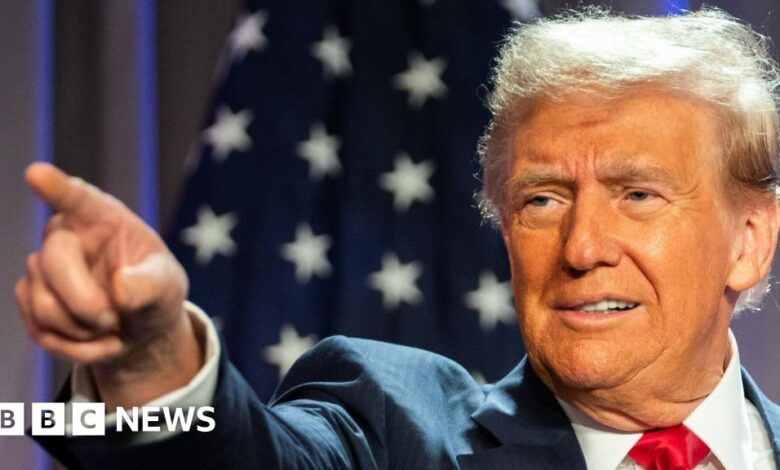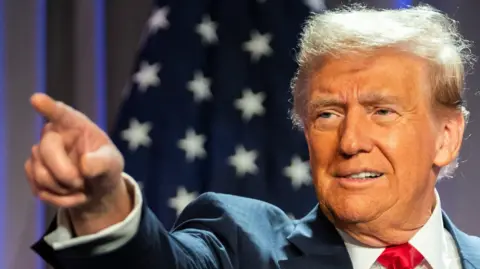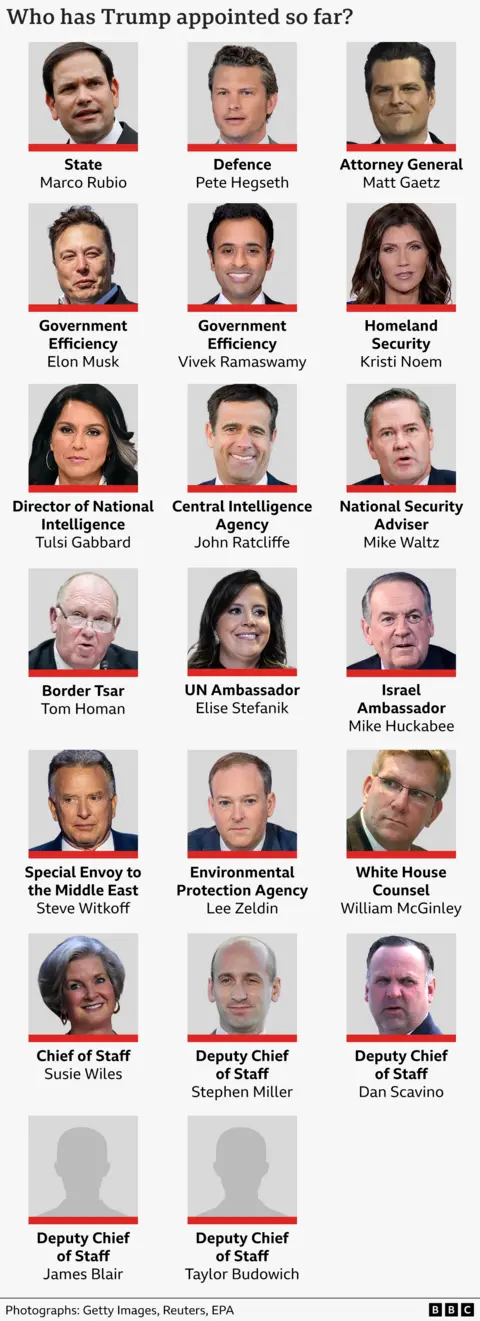Check out Trump’s nominees: What are the recess appointments?

 shutter
shutterDonald Trump is facing opposition in some aspects to the key personnel he announced before returning to the White House.
While some of the Republican president-elect’s personnel decisions are made immediately, many still have to go through a more thorough review process.
Some positions require a Senate hearing and majority approval by the chamber.
But Trump is said to be considering a provision in the US Constitution that would allow the president to unilaterally appoint nominees if the Senate is not in session.
Senate vetting: How does it work?
More than 1,000 positions — including 15 officials chosen to lead executive agencies, known as the Cabinet — typically require Senate approval. This also includes ambassadors and even some lower-level positions.
But many members of Trump’s team, including those who work at the White House or in positions like national security adviser, do not require Senate confirmation. However, they are still scrutinized by authorities and may face extensive background checks by the FBI.
On Thursday, incoming Senate Majority Leader John Thune said on Fox News that he did not anticipate a smooth road for either candidate.
“None of this is going to be easy,” he said.
The FBI said members subject to vetting include presidential appointees, White House staff, positions subject to Senate confirmation and other national security positions requiring clearance security.
The FBI said it “does not adjudicate or express an opinion on the results of background investigations,” which are then sent to the president-elect’s office or the White House Counsel’s office for use “as deemed appropriate.” fit”.
The agency is also responsible for focusing “on character and conduct” and completing the investigation “as quickly as possible.”
The Senate confirmation process requires nominees to submit financial disclosure forms, fill out questionnaires — which vary by role — and testify before a Senate committee.
These hearings can sometimes be controversial. They allow members of both political parties to question nominees about their backgrounds and plans for the position.
After the hearing, the committee will vote on the nomination. If a nominee is approved, the entire Senate will vote on the nominee.
Historically, the Senate approves cabinet positions quickly — sometimes with little or no debate. However, the Senate history website notes that “political and partisan conflicts between the president and senators sometimes created bitter fights over cabinet nominees and resulted in their ultimate withdrawal or refusal”.
The fierce political debate over Trump’s choice may be somewhat limited because Republicans will control both houses of Congress when the president-elect takes office in January.
But some Republicans have questioned at least one Trump pick, Florida congressman Matt Gaetz, a candidate for attorney general or top prosecutor in the US.
What are recess appointments?
The process of vetting and approving nominees can be lengthy, but it was built into the U.S. Constitution to check presidential power. It is also designed to eliminate corrupt or unqualified candidates.
However, there is one exception to this process – recess appointments – which Trump seems intent on using to ensure his appointments can take office.
Essentially, this process says that when Congress is out of session – that is, not in session for a period of time – the president can make temporary appointments without congressional approval or vetting.
Sen Thune warned on Fox that while recess appointments are an option for nominees, they are not a sure thing. First, all senators would need to vote to pass the recess, he said, adding that senators who are concerned about a nominee could also object to the recess. tuberculosis.
The recess process was created when Congress was not in session as often as it is today and is used in emergencies so presidents can fill positions without delay.
Also considered temporary appointment and expire at the end of the parliamentary session – for a maximum of one year.
Trump recently said the Senate “has to agree” to pause appointments, otherwise “we won’t be able to confirm people in a timely manner.” He noted that in his previous administration, some of his nominees took years to get approved.
Trump’s plan to use recess appointments, along with the announcement that Republican senators support bypassing the Senate vetting process, is not unprecedented.
Some past presidents have used this method liberally, often as a way to overcome political divisions that can slow down the nomination process.
According to the Congressional Research Service (CRS), George W Bush made 171 recess appointments, Bill Clinton made 139 appointments and Barack Obama made at least 32 appointments.
This method of placing nominees into office was virtually stopped after the Supreme Court ruled against Obama in 2014, overturning many recess appointments and calling them unconstitutional.
Josh Chafetz, a constitutional law professor at Georgetown University, said the recess appointments were “not intended to be a mechanism to circumvent Senate consent.”
While other presidents have used them, Professor Chafetz said: “I can’t think of a single case in which a Senate majority has triggered a recess just so a president could call appointments.” See you during break time.”
When can Trump make recess appointments?
According to Professor Chafetz, there are two paths Trump could take to make recess appointments.
The first would involve the Senate agreeing to a recess of 10 days or more by a majority vote.
The second would involve the House voting to request a longer recess than the Senate, which would allow Trump to use a never-before-used constitutional power to adjourn both chambers of Congress.
According to the US Constitution, “in case of disagreement”, the president can adjourn both houses of Congress until “such time as he shall think fit” – which would give Trump the opportunity to appoint appointments during breaks.
Trump previously threatened to use this power while in the White House.
In 2020, during a pandemic briefing, Trump said he would “exercise his constitutional right to adjourn both houses of Congress” to make recess appointments if those appointed His nomination to Congress was not approved.
Professor Chafetz emphasized that the route had never been used before in US history and so “no one was sure how it would work”.
He added that Trump cannot make any recess appointments until he becomes president. His inauguration is scheduled for January 20.
If Trump wants the Senate to recess for more than 10 days, he needs unanimous consent from all 100 lawmakers.
But the House includes 47 Democrats, all or most of whom would vote to block the change.
To overcome that blockade, Republicans need to achieve a 60-vote majority, which would mean winning support from all 53 of their members and at least seven Democrats.
With Republicans unlikely to reach that threshold, they would face repeal of a procedural tool known as the filibuster. Incoming Senate Majority Leader John Thune, like his predecessor Mitch McConnell, has indicated that he does not support setting such a precedent.






